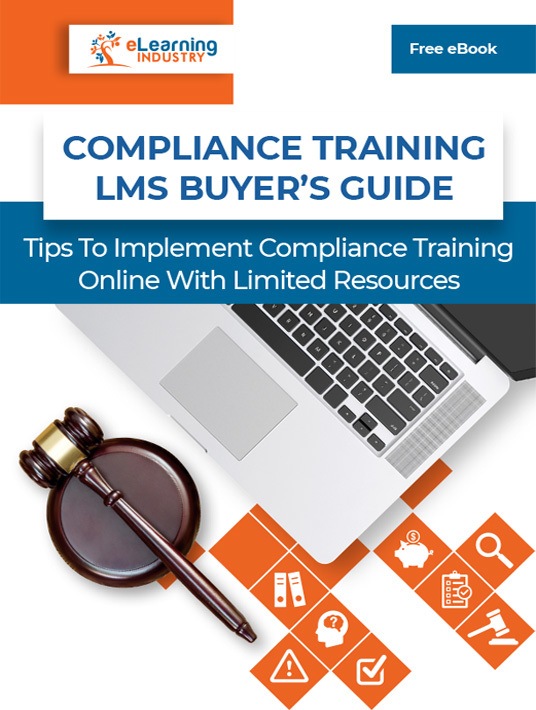How To Use Compliance Certifications To Maintain Company Standards
Compliance is all about reducing risks and holding employees accountable. However, it’s also designed to uphold company standards. Your employees need to know about organizational policies and protocols to align themselves with your image. Violations won’t just cause on-the-job accidents or incur fees. But cause your business to lose face and diminish your credibility. Here are 7 ways to use compliance certifications to set the bar and ensure that your employees are meeting company expectations.

1. Set Measurable Goals That Tie Into LMS Metrics
The primary intent of launching a compliance certification program is to address an issue that may lead to on-the-job risks. Whether that is sustaining an injury or violating a rule that leads to fines. As such, each certification must tie into a measurable goal you can track via the LMS reports. For example, the goal is to reduce work-related accidents in your warehouse department. Determine which LMS metrics you should monitor to measure progress and performance. As well as which resources belong in your certification course to impart the necessary skills or knowledge.
2. Launch A Course To Monitor And Bridge Skill Gaps
Compliance certifications aren’t just about imparting policies and ensuring that employees know the local regulations. They also help to bridge gaps that underlie the core compliance issues. You’re able to identify and monitor these gaps by creating certifications that touch on each ability so that employees have the basic building blocks. For example, positive communication skills that allow them to address sexual harassment or anti-bullying scenarios.
3. Create Different Certification Paths Based On Titles And Tasks
Everyone on your team has different responsibilities and job tasks. Thus, they should have different certification paths based on their titles and positions. As well as the pre-existing gaps that may hinder their performance. Conduct assessments and surveys to disclose the pain points and use the data to customize their path. Which should also include tasks that are common for everyone in that department or role. For example, every customer service employee will have resources that pertain to processing returns or handling complaints according to company policy.
4. Integrate Real-World Activities To Show Policies In Action
Using a compliance training LMS gives your organization an advantage. You can move beyond the theory and facilitate a real-world experience. Simulations, serious games, branching scenarios, and video demos show the policies in action. Instead of merely brushing the surface of compliance issues, employees immerse themselves in realistic scenarios. Such as how to handle a COI breach with a client or what to do when a customer becomes irate. Thus, they can spot areas for improvement and learn from mistakes, so they don’t make them in the workplace. Real-world activities stress the importance of safety in the workplace, as well. Employees get to see how their actions impact others and lead to real consequences in a safe online training environment.
5. Incorporate Government-Sponsored Resources Into Your Strategy
A cost-effective way to develop compliance certifications that are linked to rules and regulations is to incorporate government resources. For example, tutorials and demos that are sponsored by local bodies who enforce the laws. Sometimes, you can even integrate vendor-provided resources into your course if the topic pertains to products. Such as how to properly use their device to avoid injury. Just make sure you have permission to use these training tools in your compliance training software.
6. Identify Under-Performers To Offer Ongoing Support
Another perk of using compliance training software to launch your compliance certification program is identifying employees who fall behind. As an example, an employee has not earned a certificate that was supposed to be in their training portfolio a month ago. Or LMS reports disclose that they took longer than expected or barely made the grade during the final exam. Thus, you’re able to offer them follow-up tools to bridge the gaps and bring them up to speed. You can even automate report delivery so that managers and team leaders know who needs ongoing support.
7. Identify Top-Performers To Turn Them Into Company Mentors
Aside from identifying under-performers and intervening while there’s still time, compliance certifications can also highlight top talent. Namely, employees who excel within the certification course and out-perform their peers. These individuals are great candidates for online training compliance mentors. They can help their co-workers improve performance behaviors and skills that relate to the compliance issues. In short, the set the example for others so that everyone understands company expectations. You can invite them to host live events to share their experiences. Or pair up with newcomers to guide them through the compliance onboarding process. Another way to get them involved and uphold company standards is to launch peer-based coaching groups on social media. They can coach a small team of peers on compliance issues that pertain to their niche. Such as customer service policies or safe handling procedures.
Compliance certifications aren’t the only thing that can track gaps and ensure that standards are met. You can also incorporate gamification into your strategy to monitor employee performance and offer follow-up support. That said, certifications are a cost-effective backbone for your compliance training program. They’re flexible enough to suit virtually any compliance topic and they map out every stage of the training process. This may be in the form of checklists, map-themed paths, or interactive progress bars. Whatever route you choose, you should always give employees the power to see how far they’ve come and what they must accomplish next.
Have you ever wondered what compliance training is and how you can implement a compliance training LMS in your workplace without going over your budget? Download our eBook Compliance Training LMS Buyer's Guide: Tips To Implement Compliance Training Online With Limited Resources and discover how to cut costs, mitigate risks, train your employees, monitor their performance, and maintain your company’s high standards.

